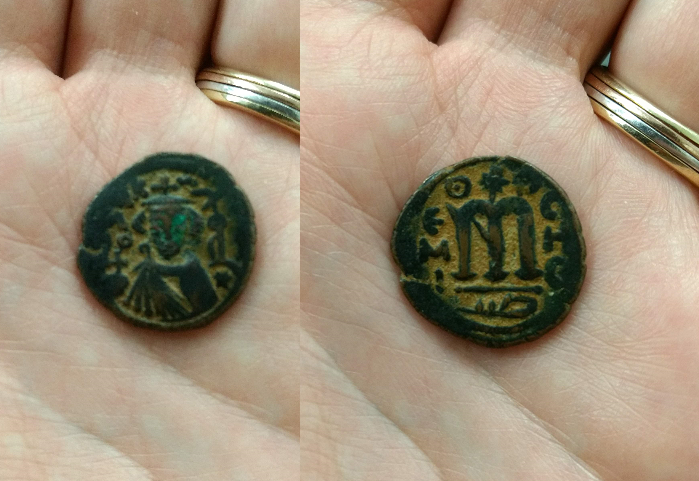Douglas Whalin late antique historian
Visiting the Research Centre for Islamic Numismatics Tübingen (FINT)
Last week, I along with other fellows currently based at the Center for Advanced Studies “Migration und Mobilität in Spätantike und Frühmittelalter” at the University of Tübingen, had the opportunity to visit the university’s world-class collection of Islamic coins. Our visit was organized and hosted by Dr. al-Chomari from the Forschungsstelle für islamische Numismatik (FINT), who kindly introduced us to the research center and showed us some of the collection.
FINT is not just the largest collection of Islamic coins in Germany, but with a current holding of approximately 75,000 coins it is among the largest in the world. Its holdings span the whole of Islamic history, from the seventh century to today. We got to handle some of the earliest examples. At a casual glance, the first could easily be mistaken for a Roman follis of Constans II, but for the Arabic script on the reverse under the M (the Greek number 40, denoting the nominal value of the follis as 40 nummi).

The second is based on a Sassanid drachm, minted under the Umayyads. The icongraphy is unchanged, the bust of a Sassanid ruler on the obverse and a fire alter (flanked by guards) on the reverse.

The collection is still growing, and while the archive is well-organized, only a fraction has been published so far. The Sylloge Numorum Arabicorum Tübingen is organized geographically according to the mint of origin. A new volume will soon be appearing in print.
March 3rd , 2020 by DC Whalin